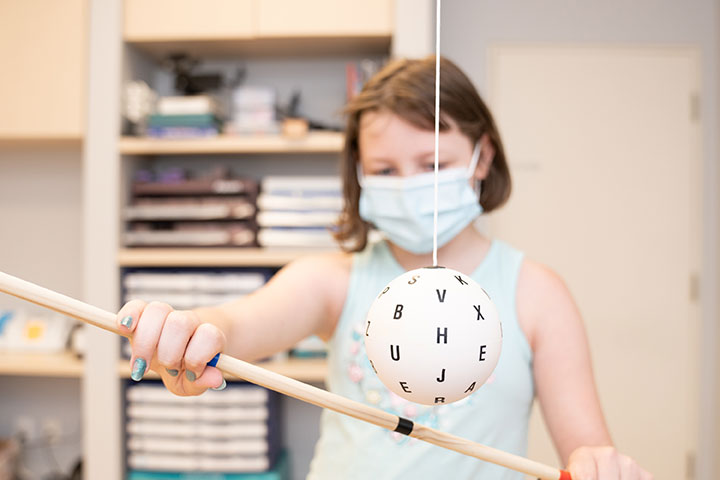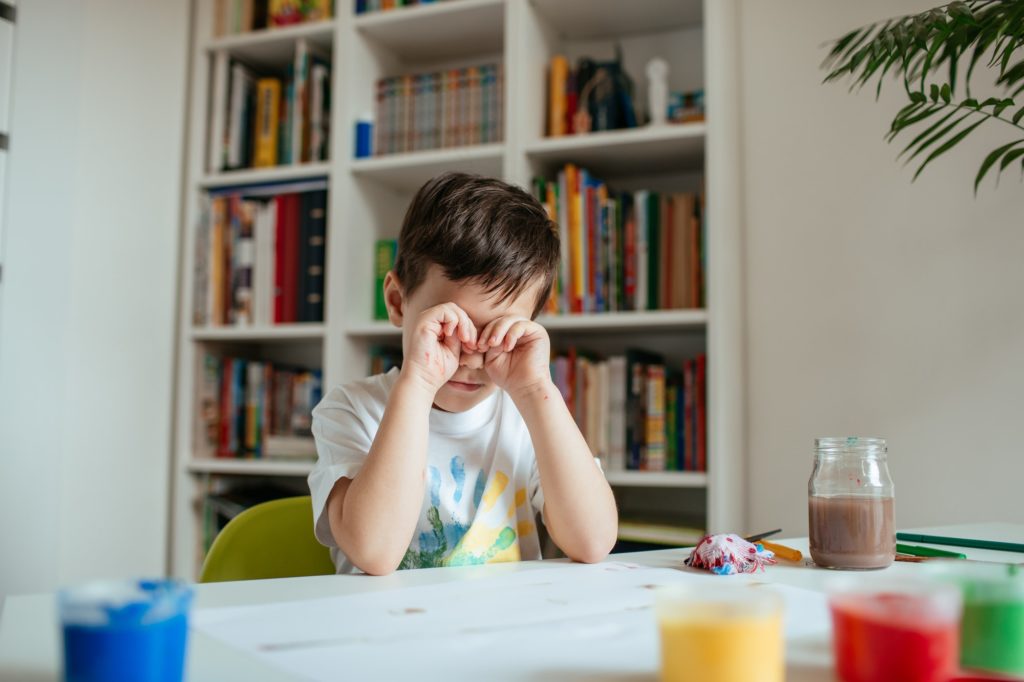
Vision therapy is a carefully personalized program of vision procedures aimed at treating eye teaming problems, eye focusing disorders and eye tracking deficits. This is a safe, non-surgical process utilizing specialized equipment for in-office exercises and supplemented with in-home activities. Vision therapy helps to enhance the brain and eyes’ ability to work together in order to provide clear and comfortable vision.
Visual deficits can be a direct result of acquired brain injuries (concussion, trauma, stroke, etc) and other neurological conditions (multiple sclerosis, seizure disorders, etc). Damage occurs to parts of the brain responsible for visual function.
A Neuro-Optometric Asessment by the optometrist can help determine how a person’s visual system has been affected by an injury or disease process. Treatment includes specialized glasses and neuro-optometric rehabilitation therapy. Rehabilitation helps to improve the brain and eye’s ability to function together again.
An integrated multi-disciplinary team approach plays a crucial role in the recovery plan. This may include physical, occupational, and vestibular therapy.

Vision therapy helps to improve visual skills with the use of special optical devices such as therapeutic lenses, prisms, and filters. Throughout therapy, these newly acquired visual skills are reinforced and become automatic. Vision therapy is performed under doctor supervision.
Vision therapy is effective for both children and adults.
Some symptoms indicating a visual problem and may warrant vision therapy include:
Some visual problems that can be improved with vision therapy include:
“20/20” vision only means that one can see, but may be lacking the skills needed for learning. 1 in 10 children have a vision problem significant enough to affect their learning. 80% of learning is visual and 20% of all learning disabilities are due to learning-related vision problems.


Vision is much more than seeing “20/20.” Vision also includes how our eyes function (eye teaming, focusing, tracking) and processing/perception.
VIP is our brain’s ability to obtain, understand, and utilize visual information. VIP disorders can greatly affect learning in children and they can also arise from acquired brain injuries.
VIP Skills:
SIGNS OF VIP DISORDER:
VIP skills are improved and developed through Vision Therapy. Results are achieved techniques that help the brain to strengthen and form new connections in order to develop these skills.
VIP skills are not tested for during a routine eye exam. Contact us for a Visual Information Processing Assessment to help determine if Vision Therapy is the right treatment for you or your child.
Convergence insufficiency (CI) is a highly treatable binocular vision condition that affects near vision and eye muscle coordination. Convergence of the eyes occurs when the two eyes need to focus on a close object, such as a book, computer, tablet, smartphone, etc.
Convergence insufficiency means the eyes struggle to focus easily for near tasks, affecting school work, attention and office performance in adults.
A proper diagnosis of CI can prevent a child from being labelled as “lazy,” “spacey,” “clumsy”, “anxious,” and even misdiagnosed with ADHD, dyslexia, or mild autism.
CI affects up to 1 in every 8 children, that is 13% of all school-aged students.
It is therefore possible, that four children in every classroom may be struggling with this condition!
Diagnosis and treatment of CI is essential for your child’s success in reading, learning, sports performance, and more.
Schedule an exam with an eye doctor who has experience diagnosing and treating CI with vision therapy, if you think that your child could be 1 of the 8 children affected by CI.
There are many different symptoms that can develop as a result of CI— these are the most common:
If your child has CI, the following tasks may be challenging:
A comprehensive eye exam including specific analysis of visual skills, binocular vision, convergence and focusing is required to enable identification of CI.
A basic eye exam or screening with the 20/20 eye chart is not adequate for the detection of CI.
Convergence insufficiency frequently goes undetected in school age children because comprehensive testing for CI is not included in pediatrician or school vision screenings, and standard eye exams conducted by ophthalmologists.
If an eye test does not include the specific tests mentioned above, this condition may remain undetected, affecting the child’s school and sports performances.
While the good news is that CI responds well to proper treatment— unfortunately, since many children are not assessed for CI, they are not getting the help they need early in life, if ever at all.
Children, teenagers and adults who remain undiagnosed and untreated tend to avoid reading and close work as much as possible or use various strategies to combat symptoms, such as using a ruler or finger to keep one’s place while reading or taking frequent breaks.
If untreated, CI can lead to more serious eye problems such as lazy eye (amblyopia) or even an eye turn (strabismus).
If the convergence problems are left untreated, suppression can result. Suppression of vision in one eye occurs when the brain actively shuts off one eye, causing loss of binocular (two-eyed) vision and depth perception.
In this case, some or all of the following symptoms may present:
Contact a us, if your child has experienced any of the above symptoms.
Vision therapy is the most effective treatment for CI.
Treatments for CI can be categorized as active or passive:
Scientific research, as well as optometric and ophthalmological clinical trials, agree that the primary treatment of CI should be vision therapy.
Unfortunately, No.
Some ophthalmologists may still treat children with ‘pencil-push-ups’. While a 2002 survey of ophthalmologists and optometrists indicated that home-based pencil-push-ups therapy is the most common treatment, scientific research does not support this method.
Studies done on pencil push-ups have shown it to be ineffective in eliminating symptoms.
Vision therapy is highly recommended for treatment of CI.
Standard eyeglasses, contact lenses, medications, and surgery will not be effective in treating the condition. Vision therapy focuses on training the eyes to work together to improve 3-D vision, depth perception, and clear binocular vision.
Treatment exercises for CI may include:
The goal of vision therapy is to stimulate the communication between the brain and eyes, to enable clear and comfortable vision at all times.
According to Dr. Michael J. Bartiss, O.D., M.D., F.A.A.O., F.A.A.P., F.A.C.S, Pediatric Ophthalmologist, “Fortunately, in most cases, convergence insufficiency is very amenable to orthoptics and vision therapy.”
If you think your child may have CI, schedule an eye exam to assess your child’s vision skills.
Recent published studies have shown that CI can be effectively treated.
An eye doctor near you can prescribe a customized vision therapy program, tailored to your child’s specific needs. Vision therapy can improve your child’s binocular vision— facilitating your child’s healthy development of many essential life skills.

We are proud to deliver industry-leading eye care to patients of all ages.